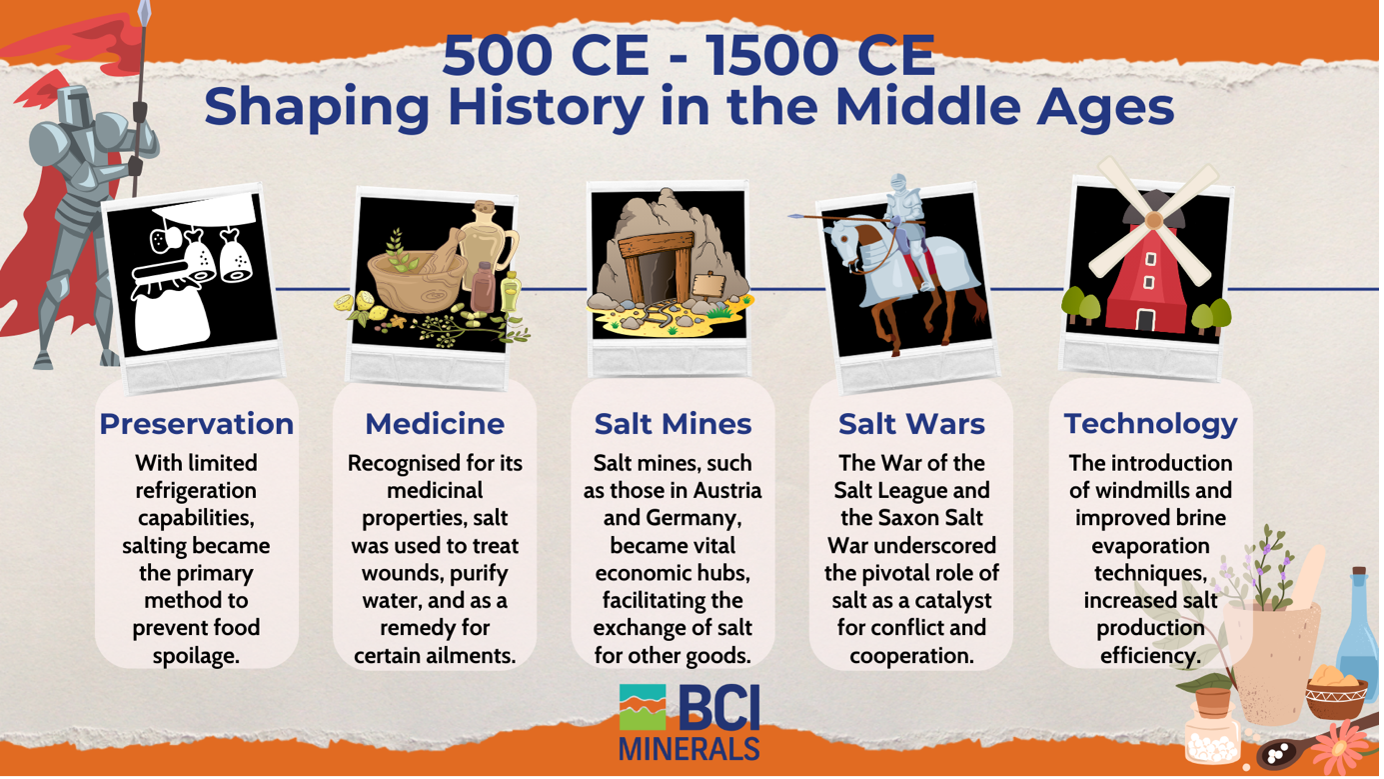
In the chronicles of human history, few substances have played a more pivotal role than salt.
To better understand the value of this critical resource today, we journey back in time to travel the salt road
Its significance spans millennia, with the Middle Ages standing out as a period where salt not only seasoned meals but influenced commerce, health, and preservation practices.
Early Medieval Period (500-1000 CE)
During the Early Medieval Period, salt emerged as a crucial element for preserving food, especially meat and fish.
With limited refrigeration capabilities, salting became the primary method to prevent spoilage and communities relied on salt to cure and store large quantities of food, ensuring a stable supply during harsh winters or times of scarcity.
Salt was not only a preservative but also recognised for its medicinal properties, it was used to treat wounds, purify drinking water, and even as a remedy for certain ailments.
The importance of salt in maintaining health was acknowledged across various medieval civilisations.
High Medieval Period (1000-1300 CE)
As medieval societies expanded and trade routes flourished, the demand for salt increased exponentially.
Salt mines, such as those in Salzburg (Austria) and Hallein (Germany), became vital economic hubs, with the strategic location of these mines along trade routes facilitating the exchange of salt for other goods, contributing to the economic prosperity of regions fortunate enough to possess them.
Some rulers recognised the economic potential of salt and established monopolies or imposed heavy taxes on its production and trade, allowing them to amass wealth and control a valuable resource, often leading to conflicts and power struggles.
Late Medieval Period (1300-1500 CE)
In some instances, the control over salt production led to outright conflicts.
The "Salt Wars" of the late medieval period saw cities and regions fighting for control over salt mines and trade routes.
They were fuelled by the economic and strategic importance of salt, leading to bloody battles, diplomatic manoeuvring, and the formation of alliances among rival factions.
Examples of these battles include the War of the Salt League (1353-1381) and the Saxon Salt War (1471-1473), both of which underscored the pivotal role of salt as a catalyst for conflict and cooperation, leaving a legacy on the societies and regions embroiled in their tumultuous wake.
Technological advancements, such as the introduction of windmills and improved brine evaporation techniques, increased salt production efficiency, which contributed to a more widespread availability of salt, making it more accessible to different social classes.

As we continue to journey through time to explore the origins and value of salt, we approach the Early Modern Period where salt was a crucial factor in the significant developments of trade routes and cultural impacts.
The first article in this series, Salt 101: The ancient legacy of salt, explored ancient times when salt was a precious commodity, revered for its various uses, ranging from food preservation to health, mining, and trade.
Read it here: https://www.bciminerals.com.au/newsroom/981-salt-101-the-ancient-legacy-of-salt.html
